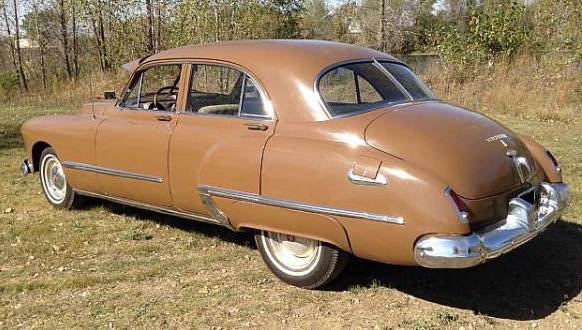As it turned out, demand for cars was strong, and the feared immediate postwar recession didn't happen. So Ford Motor Company and Chrysler Corporation did not market redesigned cars until the 1949 model year.
It was slightly different for industry leader General Motors. New A and B bodies did not appear until 1949. Affected brands were Chevrolet, Pontiac and Buick. Ditto for Oldsmobile's 70 and 80 series cars. But a redesigned top-of-the-line C body was released for Cadillacs and Oldsmobile 98s. It also was used for an extended 1949 model year for Buick's Super and Roadmaster lines.
This post deals with 1948 Oldsmobile 98s that had those new C bodies.
This is a 1947 Olds 98 that used the previous C body.
And here is a 1948 Olds 98. At this time, GM's legendary styling director Harley Earl favored large-radius rounded shapes. This might have been residue from circa-1940 thinking that cars of the future would have highly streamlined, teardrop-derived shapes. But such designs looked bulky, so Earl compromised, placing rounded shapes on an otherwise fairly lithe basic platform. The 1948 98s featured flow-through front fenders and retained distinct rear fenders to avoid visual bulk. Dropping the fender tops below the belt line also helped in this regard. Note the continuity in grille shape and side trim. This tactic preserved brand identity when body designs were discarded and replaced.
I've used this photo in several places because it shows what a fine design the fastback version of the C body was.
Another new feature was curved windshield glass. The technology for reliable (low manufacturing breakage rates) mass-production of curved, shatterproof automotive glass was in its earlier stages, so '48 C bodes featured divided, rather than one-piece windshields.
The same applied to the rear window (or backlight, in styling jargon), as can be seen in this "for sale" photo.
Another sales photo, but of a restored Oldsmobile 98. The split window seems to make an otherwise pleasing design slightly cluttered. On the other hand, it helps define the car's vintage. For example, when Hudson enlarged the back window opening of some of its 1950 models, it too used two-piece glass.


























































